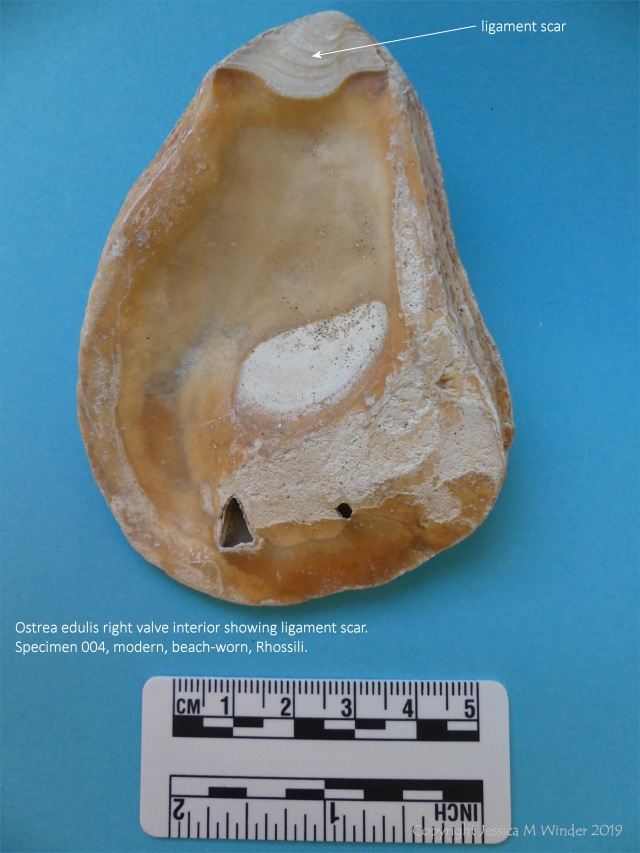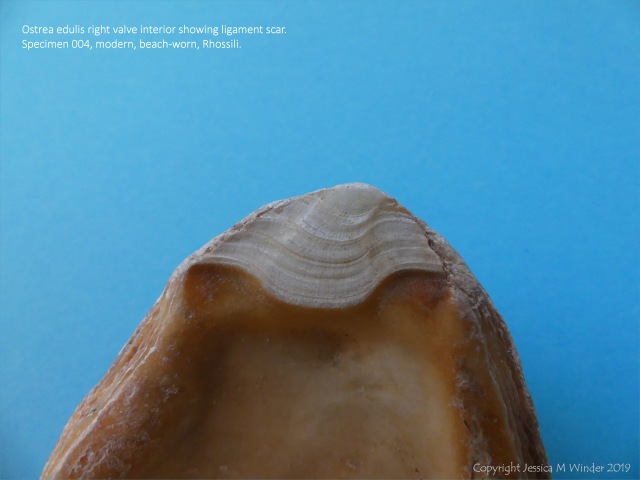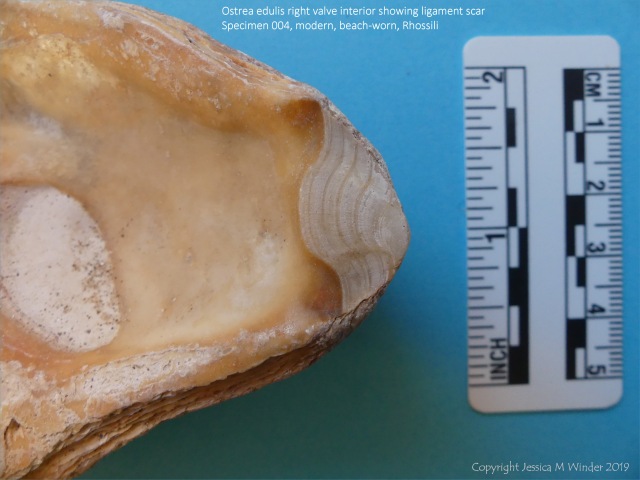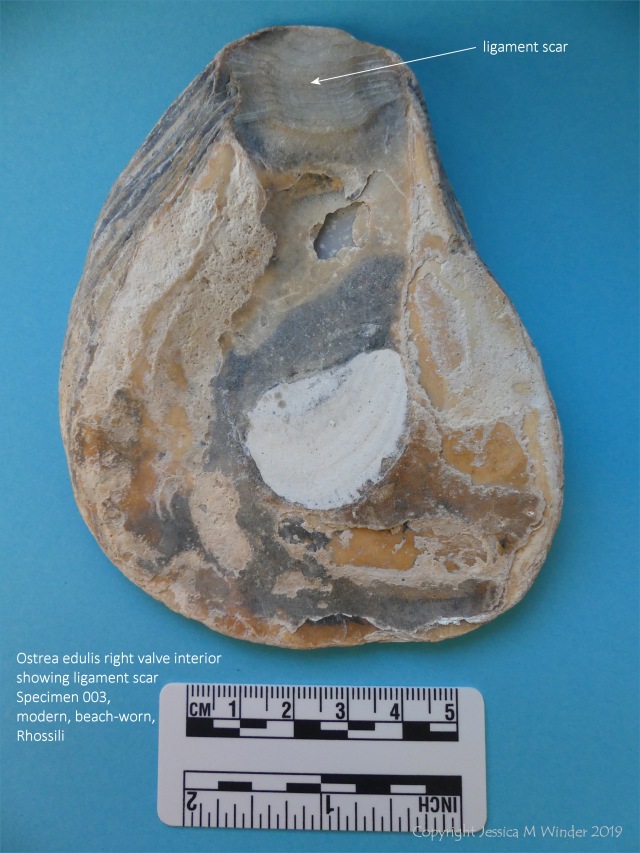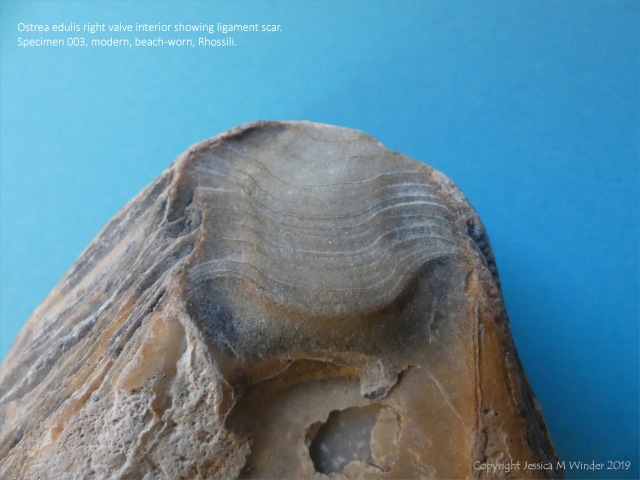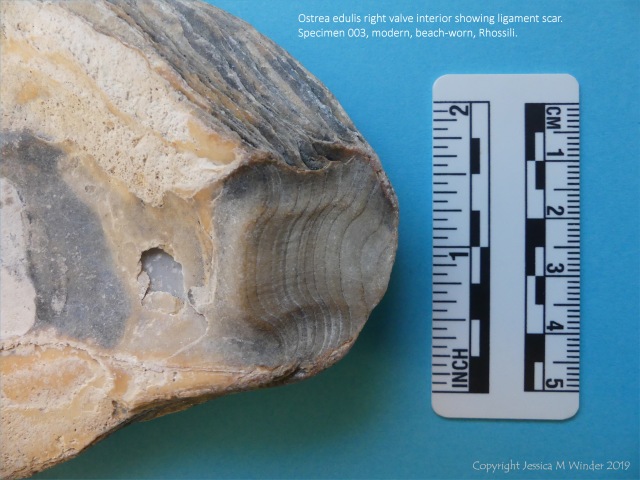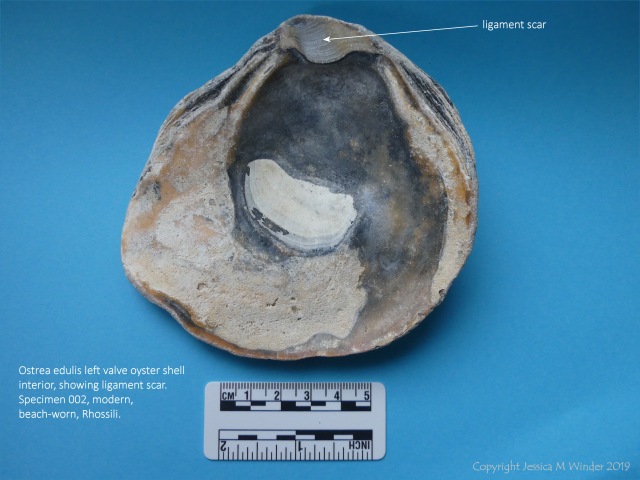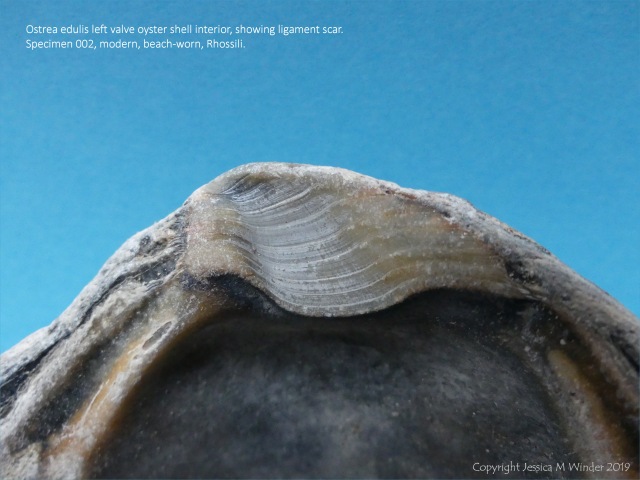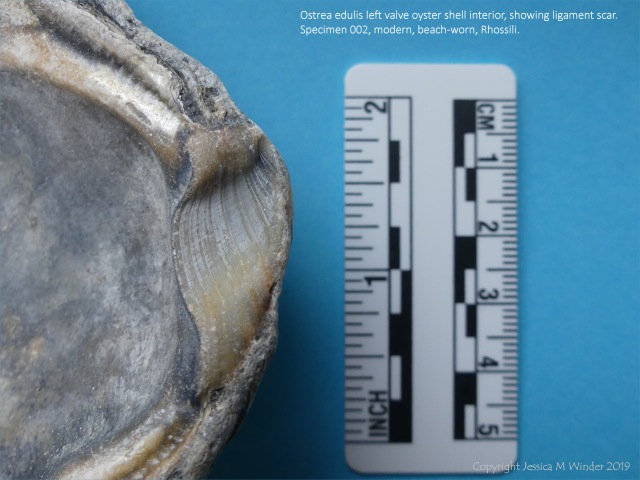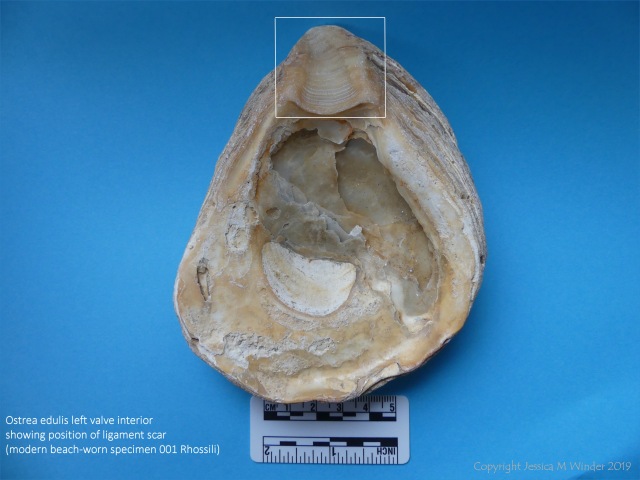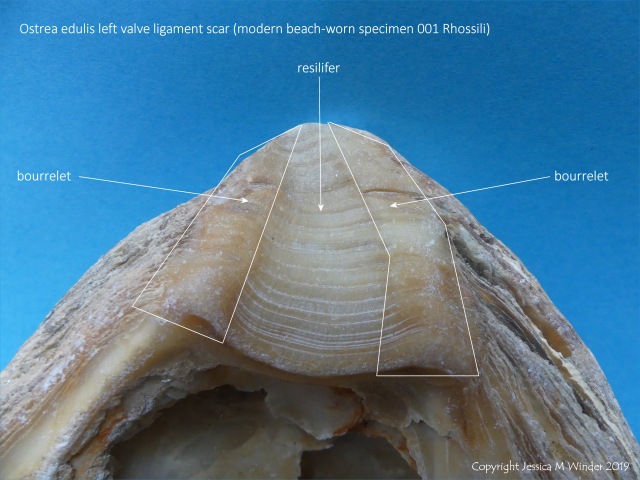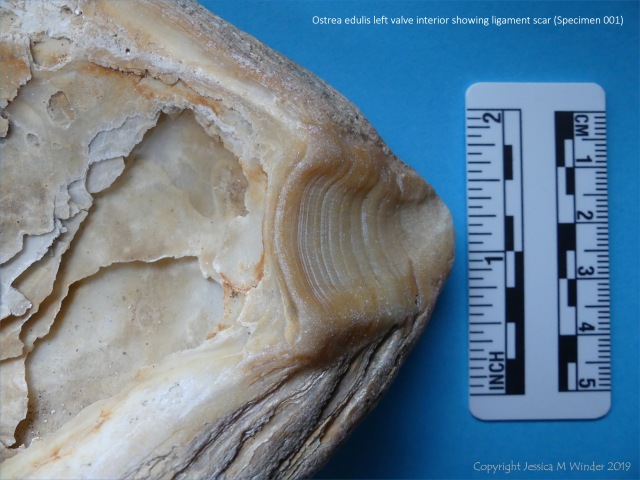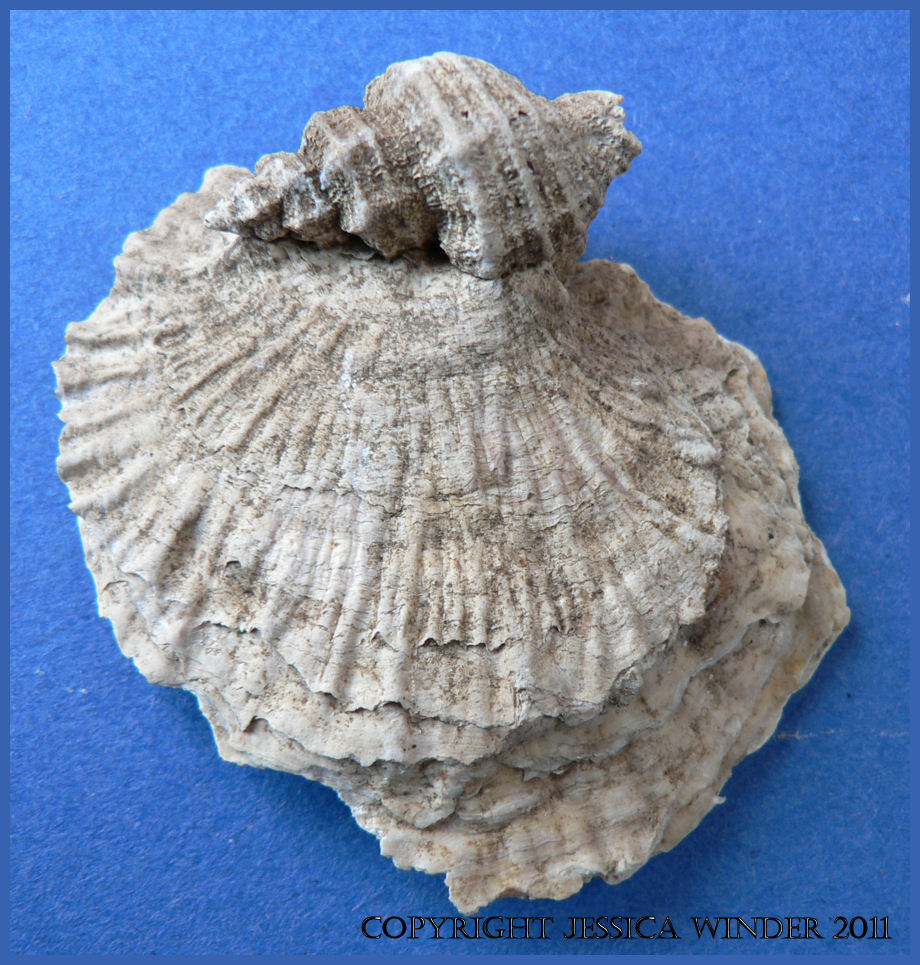
An ancient Saxon period oyster shell (Ostrea edulis Linnaeus) the spat of which originally settled on the shell of a Sting Winkle, Ocenebra erinacea (Linnaeus), which survives attached to the heel of the mature oyster.
Oyster shells from archaeological sites: a brief illustrated guide to basic processing
Important notes
This manual (which can be downloaded via the links below) describes a simple way of recording details of the macroscopic appearance in oyster shells recovered from archaeological excavations, with a view to quantifying their natural and man-made characteristics, to understand about their exploitation, and enable comparisons to be made between oyster shell samples within the various contexts of a single site, or between samples from different sites, and different periods. It describes a recording method which was devised in 1975, and finally written up and published informally on-line in 2011.
The method was designed to be easily learnt and used by non-specialists. This means that it is also easy to miss-apply. Originally, the technique was taught side-by-side with the expert in a training session so that checks were possible while recording was in progress, and the accuracy of the trainee’s independently-obtained results could be determined by carrying out statistical tests for comparability between the results of the expert and the trainee for selected samples. This ensured consistency of results.
I would like therefore to urge caution in the use of the manual at the present time on four fronts:
- Before commencing full recording of the archaeological oyster shells, question whether the samples are valid for further study. Do the samples comply with the standards and requirements outlined in Campbell (2015, 2017)?
- In recognition of the development of other approaches to studying archaeological oyster shells during the 45 years since this methodology was first devised, and in particular the advancement in technological methods of analysis, is this recording technique the most appropriate to use?
- Given the importance of comparability between samples both spatially on an intra-site and inter-site basis, and temporally between historical periods, what quality control measures are in place to ensure accuracy and consistency of the recording? Can the results be trusted in comparisons between samples recorded by different individuals?
- Finally, an editorial correction regarding the names of the dimensions being measured. The measurement from the umbo to the ventral margin which is termed maximum width in the manual is more correctly called the maximum height. This was corrected in Winder (2017).
About the handbook
- Oyster shells from archaeological sites: a brief illustrated guide to basic processing is included in this post as a free downloadable PDF file. See below.
- It is a starter’s guide to handling oyster shells (British Native Oyster, European Flat Oyster, Ostrea edulis Linnaeus) from archaeological excavations.
- This handbook can be used in conjunction with other postings both on Oysters etc. and Jessica’s Nature Blog that provide more information about various characteristics of oyster shells, and surviving evidence of their infestation and encrustation by marine invertebrate epibiont organisms.
- The guide provides useful information for recognising observable macroscopic details. It suggests some simple methods for processing archaeological oyster shells that may be useful for collecting and collating data, in both a qualitative and quantitative way, prior to further statistical analyses and interpretation.
- Thirty Figures with 63 colour photographs illustrate the topics discussed.
- Sources of information are provided in a bibliography; and relevant textbooks are recommended.
Click here for PDF file Oyster shells from archaeological excavations: a brief illustrated guide to basic processing
OYSTFORM3
If you have a problem with downloading the document, please contact me via winderjssc@aol.com, and I will try to send the file to you by e-mail or other means.
REFERENCES
Campbell, G. (2008) Beyond means to meaning: Using distributions of shell shapes to reconstruct past collecting strategies, Environmental Archaeology, Vol. 13 No.2, 111-121.
Campbell, G. (2010) Oysters ancient and modern: potential shape variation with habitat in flat oysters (Ostrea edulis L.) and its possible use in archaeology, MUNIBE Supplemento-Gehigarria, No. 31, Donostia-San Sebastian, D.L. SS-1055-2010, 176-187.
Campbell, G. (2015) “What do I do with all these shells?” Basic guidance for the recovery, processing and retention of archaeological marine shells, in Quaternary International 2015, http://dx.doi.org/10.1016/j.quaint.205.09.013, 1-8
Campbell, G. (2017) Chapter 16 The collection, processing and curation of archaeological marine shells, in Molluscs in Archaeology: methods, approaches and applications, ed M. J. Allen, Studying Scientific Archaeology No. 3, Oxbow, Oxford and Philadelphia, 273-288
Somerville E., Light, J., and Allen M. J. (2017) Marine molluscs from archaeological contexts: how they can inform interpretations of former economies and environments, in Allen, M. J. (ed.) Molluscs in Archaeology: Methods, approaches and applications. Studying Scientific Archaeology 3. Chapter13, 214-237.
Winder, J. M. & Gerber-Parfitt, S. 2003. The oyster shells. In Malcolm, G. & Bowsher, D. with Cowie, R. (eds.), Middle Saxon London – Excavations at the Royal Opera House 1989–99, 325–332. London: Museum of London Archaeology Service Monograph 15
Winder, J. M. (2011) Oyster shells from archaeological sites: a brief illustrated guide to basic processing https://oystersetcetera.wordpress.com/2011/03/29/oyster-shells-from-archaeological-sites-a-brief-illustrated-guide-to-basic-processing/
Winder, J. M. 2017 Oysters in Archaeology. In Allen, M. J. (ed.) Molluscs in Archaeology: Methods, approaches and applications. Studying Scientific Archaeology 3. Chapter 14, 238-258, Oxford, Oxbow Books



























































